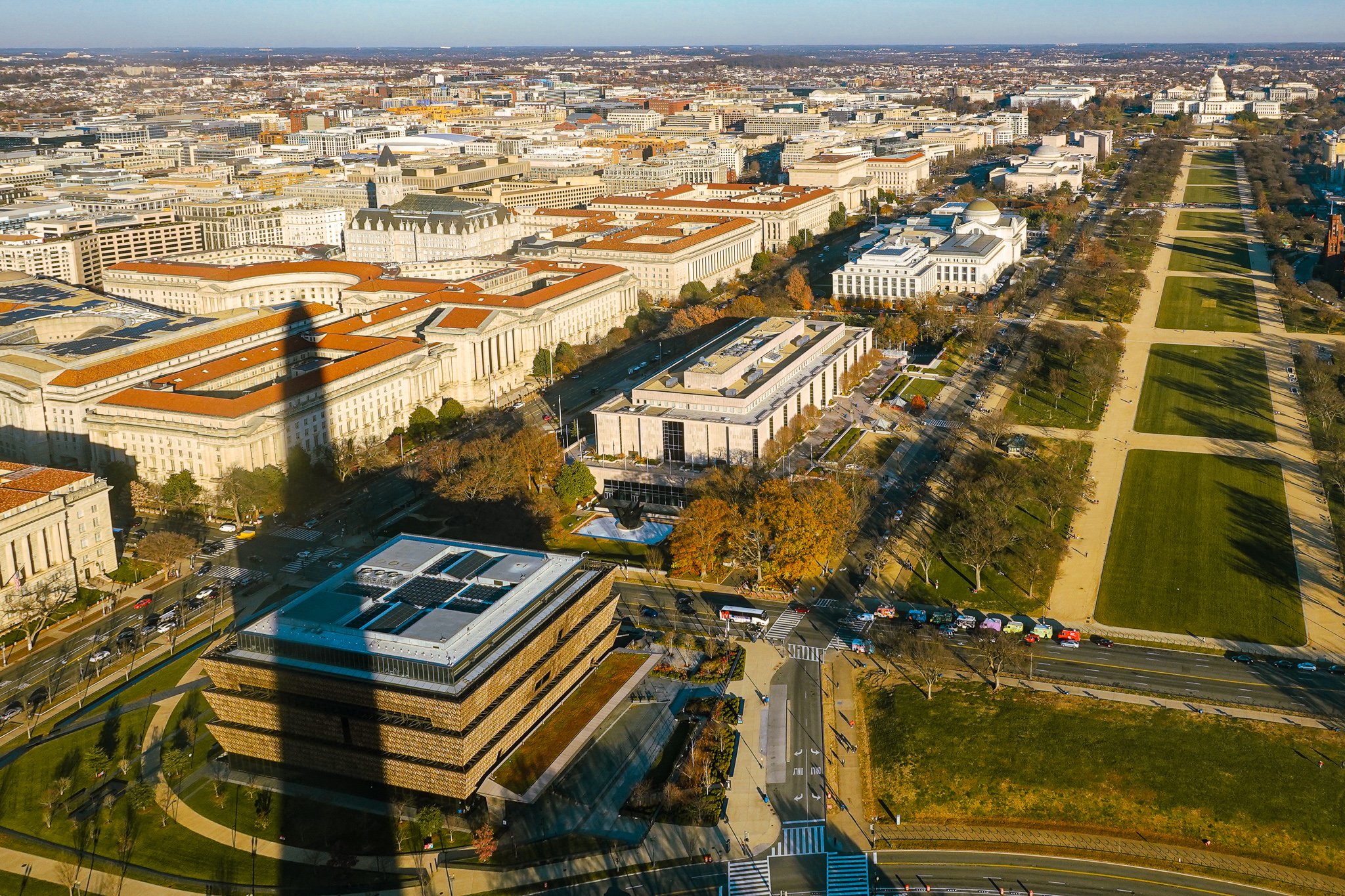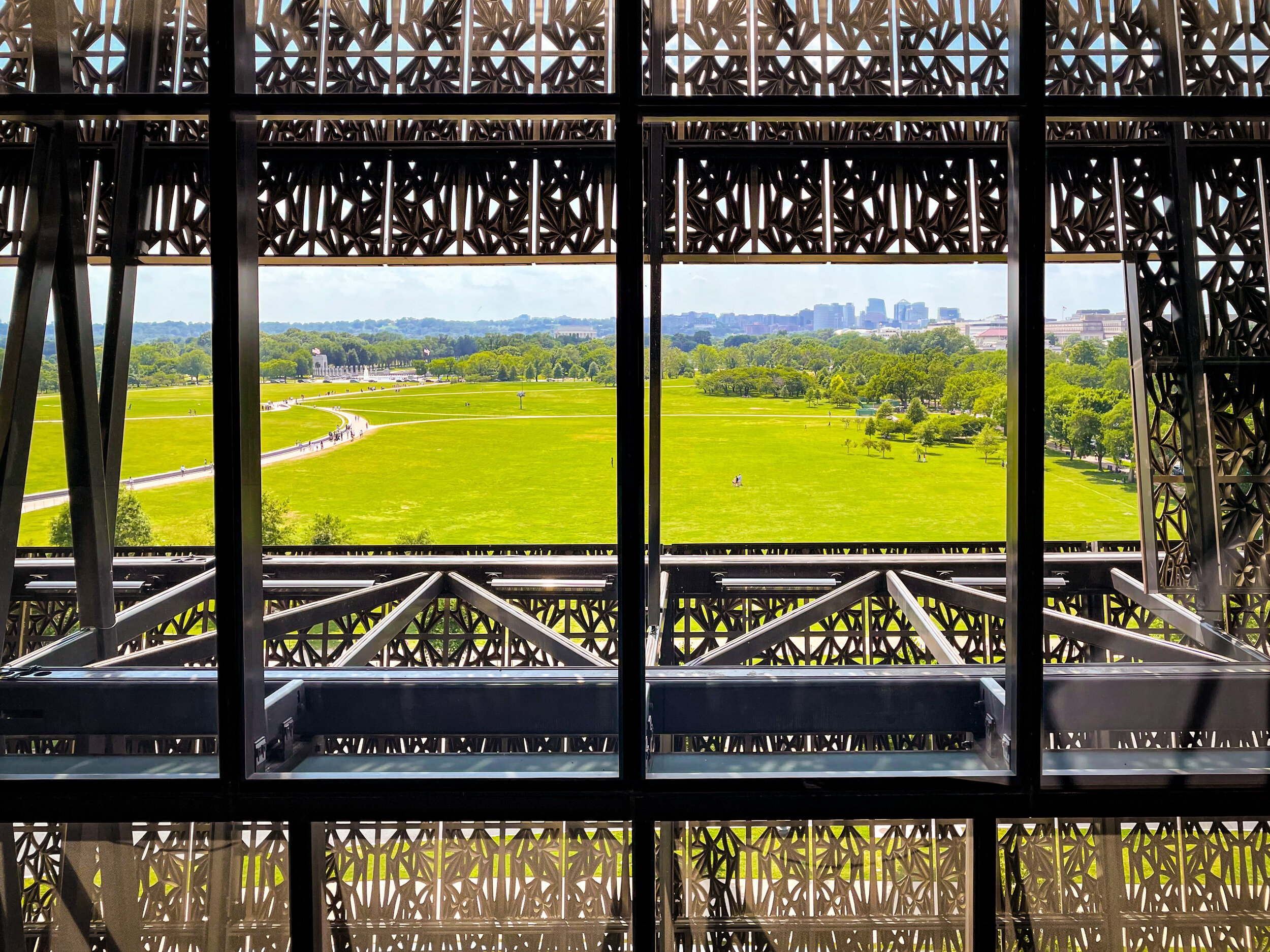Autumn in Northeast DC
Exploring the Union Market area of Northeast DC.
The Looking Blog

Surprisingly, one of the more intriguing parts of my recent visit to the Afrofuturism exhibition was the exhibition booklet. Typically, the exhibitors booklet --if there even is one-- is a mostly ephemeral folded pamphlet with obligatory, but duplicate information. I will usually pick one up whenever I first enter a new exhibition, but if it looks like I won't get anything out to it, I put it back in the rack for the next person.
Not so with Afrofuturism: A History of Black Futures. Just as the NMAAHC has done with their exhibition websites, they have created a booklet that compliments and extends your experience beyond exhibition. It is deemed a "Cosmic Companion" and that rings true.
The booklet helps you plan your walk through the exhibitors with "Discover Treks," offers prompts and questions to enhance your visit beyond the objects, and even offers tips on how to interact with the museum itself; from defining the word "object" wo helping you manage the time you have to see it all. I really loved the booklet and have been flipping through it the past few days admiring the work that went into it.
As for the exhibition itself, it is a vast, but also focused on the evolving concept of Afrofuturism. Yes, it does concern the future, but also the past. It posits past and present struggles for freedom as afrofuturist in nature; reimagining a future of freedom and autonomy.


The exhibition delves into multiple disciplines such as music, movies, television shows, literature, comics, commentary, and poetry.
The objects and displays are broken up into three "Zones" -- 1) The History of Black Futures 2) New Black Futures 3) Infinite Possibilites. In between the Zones are "Portals," a tiny transitional story to the next section. There is even a looping replay of Gil Scott-Heron's "Whitey on the Moon" looping in one of the portals. Love it.
It's a vast exhibition that explores multiple aspects of what "future" has meant, and could mean as concept. This is a great follow up to the Smithsonian's FUTURES exhibition last summer at the Arts & Industries Building.


Afrofuturism will be open for exactly one year: March 24, 2023 - March 24, 2024. It's located on Concourse Level C1, the first thing you see on the left after talking the escalator from the ground level down to the lower level exhibitions.
Reserve tickets to the Museum here (link).

This post is powered by Patreon. Get weekly DC history posts, my DC Top 5 lists, and all my photo sets here.
Ever since I first visited the Washington, DC in elementary school, the Washington Monument came to indicate the end of long trip. Riding in a school bus from Richmond, the monument was the first sign of DC as we passed through Pentagon City, Crystal City, and the Virginia suburbs. It’s the first part of DC we could actually see from afar. Then came the Jefferson Memorial, Capitol Building, Lincoln Memorial, and the rest of downtown.
Looking up to the monument is something one can do from almost anywhere in the DC area.
Looking down from it is another story. I recently visited the top of the monument and wanted to share a few photos! But, the fact that I was actually able to ride the elevator up to the top was somewhat a feat in and of itself.


When an 5.8 magnitude earthquake centered 85 miles from DC hit in 2011, the Washington Monument was one of the buildings damaged to the extent that it needed to close to visitors immediately. The repairs, mostly to stones near the top of the memorial, took nearly two and a half years. After reopening in 2014, the lone elevator that takes visitors up and down the 555 tall obelisk failed more than two dozen times over the course of the next two years. Starting in 2016 the monument has been closed intermittently for various reasons, including the pandemic. Here’s a very brief timeline:
August 28, 2011: Closed due to damage from the earthquake
May 12, 2014: Opened to great fanfare after all earthquake repairs are complete.
September 26, 2016: Closed after the elevator failed multiple times since 2014.
September 19, 2019: Opened, with a new elevator, electrical, and mechanical systems. The National Parks Service also debuted a small security screening building at the base of the monument.
March 14, 2020: Closed due to public health implications related to the pandemic.
October 1, 2020: Opened with new pandemic mitigation protocols.
December 18-21, 2020: Closed and reopened due to a covid-19 outbreak related to a private tour inside the monument.
January 11, 2021: Closed indefinitely for the upcoming inauguration and the ongoing pandemic.
July 14, 2021: Opened.
August 16, 2021: Closed after a lightening strike caused the electrical systems to malfunction.
August 28, 2021: Opened and remains so to this day.
Did you get all of that?
Since August 28, 2021 the Washington Monument has been open to visitors with timed entry passes. You can secure a ticket on the Recreation.gov website the day before your visit. At this point, there are no same-day tickets available.
Fun fact: When complete, the Monument became the tallest building in the world passing Cologne Cathedral in Germany by 40 feet. That distinction lasted just five years when it was surpassed (at almost twice the height) by the the Eiffel Tower.
For even more photos from the top (40+) and more fun facts about the Monument, check out the Attucks Adams Patreon. And a hearty thanks to all the Patrons who have supported my work over the past year. You are appreciated!




View of the National Mall from the National Museum of African American History and Culture.